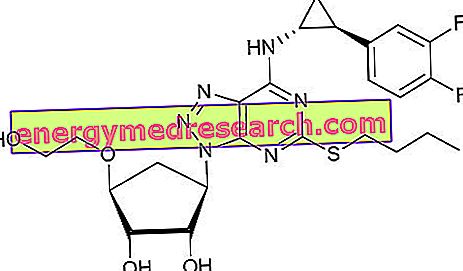Magnesium
Magnesium is an essential trace element of cellular homeostasis; it seems that its presence in food is quite widespread, especially in plants, and in physiological conditions no food shortages are known; the magnesium deficiency (induced or in any case secondary to other disorders) is manifested by an alteration in the metabolism of calcium, sodium and potassium, which results in muscle weakness, impaired cardiac function and tetanic crises.
In the healthy subject the recommended magnesium ration is about 3 or 4.5 mg / kg, however, it has emerged that slight magnesium deficiencies can be completely asymptomatic and that, sometimes, its integration can reduce symptoms related to premenstrual syndrome and especially the soreness associated with breast swelling.

Premenstrual syndrome
Premenstrual syndrome is characterized by a set of symptoms that typically occur in the second phase of the cycle; among these we highlight physical, psychic, and behavioral alterations. The triggering factors are likely to be multiple: hormonal, dietary (including probably magnesium deficiency), metabolic and neurotransmission factors.
The diagnosis of premenstrual syndrome is carried out through the detection, in the 5 days preceding the flow, of some somatic and psycho-affective signs; they must occur for at least 3 consecutive cycles and must be completely absent between the 4th and 12th day of the cycle. Obviously, the onset of symptoms must affect the subject's lifestyle and appear independently of alcohol, drugs and drugs.
Treatment
The most indicated therapy for the treatment of premenstrual syndrome is medical but not specific; there are nutritional and hormonal therapies and drugs that act on the central nervous system (CNS). Drugs are administered in a personalized way but often also general indications on the increase of physical activity can be a valid help.
Diet and Useful Supplements
Nutritional therapy is particularly indicated in mild forms, but it must not be missing even in the most important ones; it is undertaken in the second half of the cycle and is based on the increase of some molecules that are probably useful for reducing symptoms.
Among these, the most effective is the integration of trace elements and especially magnesium; it is administered mainly in the luteinic phase, generally through the magnesium pidolate, at a dose of 300 mg / day orally, however, in the doubt of a more significant deficiency it is possible to increase the dose up to 1.5g of elemental magnesium, divided into 2-3 daily hires.
In general, organic magnesium salts (gluconate, aspartate, citrate, pidolate, lactate, orotate) demonstrate better intestinal absorption than inorganic salts (magnesium chloride, magnesium carbonate, magnesium oxide, magnesium sulfate).
NB. Before embarking on integration (evaluated and administered by the attending physician) it is advisable to ensure that the subject's kidney function is not compromised.
To optimize the nutritional therapy (preventive or palliative) of premenstrual syndrome, besides magnesium it could prove useful to integrate:
- Pyridoxine (vit B6), up to 100 mg / day po
- Tocopherol (vit E), up to 300 IU / day,
both in the luteinic phase.
The control of nutritional (or combined) therapy for premenstrual syndrome is based on clinical outpatient assessment at three-month intervals, and then every six months, associated with the recording of symptoms emerged from the self-assessment questionnaire; this allows to evaluate the effectiveness of the overall treatment over time.
Bibliography:
- Recommended Intake Levels of Nutrients for the Italian Population (LARN) - Italian Society of Human Nutrition (SINU)
- Reasoned medical therapy - A. Zangara - Piccin - pag 584
- "Progress in endocrinology and metabolic diseases" - Guidelines for Diagnosis, Therapy and Control of Endocrine and Metabolic Diseases. Volume III - F. Monaco - SEE Florence - pag 41:44
- Family nutrition manual. Third edition - P. Holford - Tecniche Nuove - pag 414
- Mahalko JR, Sandsead HH, Johnson LK & Milne DB (1983) - Effect of a moderate increase in dietary protein on the retention and excretion of Ca, Cu, Fe, Mg, P, Zn by adult males - Am. J. Clin. Nutr., 37: 8-14
- Schwartz R, Spencer H & Welsh JJ (1984) - Magnesium absorption in human subjects from leafy vegetables, intrinsically labeled with stable - Mg. Am. J. Clin. Nutr., 39: 571-76.



